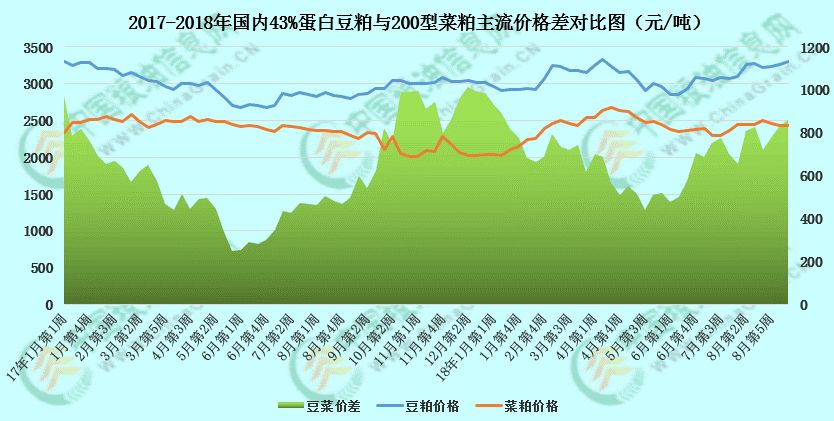On September 18, US President Trump officially announced that he will impose a 10% tariff on 200 billion products produced in China, which will take effect a week later on September 24. This tax rate will be implemented until the end of the year, and the tax rate will start on January 1, 2019. Will increase to 25%. Trump also said that if China takes retaliatory action to harm "American farmers and other industries," the United States will impose tariffs on 267 billion Chinese-made goods. That night, the Customs Tariff Commission of the State Council decided to impose a 10% or 5% tariff on 5207 tax items originating in the United States and about 60 billion U.S. dollars of commodities, effective 12:01 on September 24, 2018. If the United States insists on further increasing the tariff rate, the Chinese side will respond accordingly, and relevant matters will be announced separately. Since then, the “long-awaited” 200 billion tariffs on the domestic market have finally arrived, and the Sino-US trade war has once again entered a new climax. So, how much boost will the trade war bring to soybean meal? Han Yu, an analyst of China Grain and Oil Information Network, will give you the answer in the following article.
The trade war continues, soy meal can benefit
Since the beginning of April this year, the Sino-US trade war has escalated. As the US soybeans are difficult to flow into the country, coastal oil mills continue to be bullish on the future of soybean meal, coupled with the increase in the cost of Brazilian soybean arrivals, which in turn leads to an overall strengthening of domestic soybean meal spot prices.
At the same time, US soybean exports to China decreased. According to statistics, as of August 16, 2018, the shipment volume of US soybean exports to China in 2017/18 was 27.616 million tons, lower than the 35.541 million tons in the same period of the previous year. As of August 23, 2018, the shipment of US soybean exports to China in 2017/18 was 27.616 million tons, lower than 35.745 million tons in the same period last year. As of September 6, 2018, the shipment of US soybean exports to China in 2018/19 was 670,000 tons, down from 680,400 tons in the same period last year. Since China imposed tariffs on US $ 60 billion worth of US products on Tuesday, it also means that the Sino-US trade war is still escalating, and the continuous decline in the export of US soybeans to China has also boosted the shortage of domestic imported soybeans. Next, the domestic soybean meal spot price and disk surface will continue to strengthen.
It is worth noting that since the high yield of US beans this year is basically a foregone conclusion, the US soybean futures fell to the lowest level in 2008 due to the Sino-US trade war. At the same time, export worries have spread in the US soybean market. Although the American Soybean Association will continue to lobby its government to negotiate an escalating trade war between China and the United States as soon as possible through negotiations, market expectations are difficult to reach consensus. The overall soybean meal market is supported by the general environment of the trade war, so soybean meal futures spot prices will remain firm.
Domestic market, the good is more than the bad

As shown in the figure above, the current price difference between the mainstream domestic price of 43% protein soybean meal and the imported 200-type rapeseed meal has exceeded 800 yuan / ton, resulting in an overall high soybean meal spot price, and the aquaculture industry in southern China has been affected by the typhoon "Mangosteen" The rapeseed meal spot price as a whole has stabilized, which in turn led to the possibility of widening the soybean meal meal price difference, which may affect the overall domestic market's enthusiasm for soybean meal purchases. However, as shown in the chart below, at this stage, domestic soybean meal spot prices continue to rise, but while the terminal market is mostly focused on picking up goods, the overall transaction volume in the domestic market is still objective, which in turn makes soybean meal spot prices continue to be firm.
.jpg)
Moreover, at the current stage from North China to East China, the soybean meal contracts tending to be sold out from September to October in coastal oil factories are mostly sold out, which in turn leads to higher confidence in the spot price of soybean meal. Moreover, as the domestic soybean meal sales volume reached a new high from the end of August to the beginning of September, and the impact of domestic swine fever has not yet been fully concluded, the domestic farming industry as a whole is in a downturn, which has led feed mills around the country to still focus on soybean meal delivery. It is not surprising that the recent market transactions have slowed down.
At the same time, the overall operating rate of domestic coastal oil mills has increased at this stage. As shown in the figure below, the overall domestic soybean meal inventory has continued to decline, resulting in the current domestic market as a whole. Not out of stock temporarily. However, as we all know, the domestic pig farming season is mostly during October-November, and as the impact of swine fever gradually weakens, the domestic farming industry's demand for feed will continue to increase, or it will boost domestic soybean meal demand. And at that time, under the background of the Sino-US trade war, the supply of imported soybeans has been shrinking, and the domestic spot price of soybean meal has gradually increased.
.jpg)
In summary, the domestic soybean meal spot price may be in a shock cycle at the end of September, but with the National Day, the soybean meal spot price may rise steadily. It is worth noting that the market outlook is that the listing of US beans and the situation of the Sino-US trade war after October.





